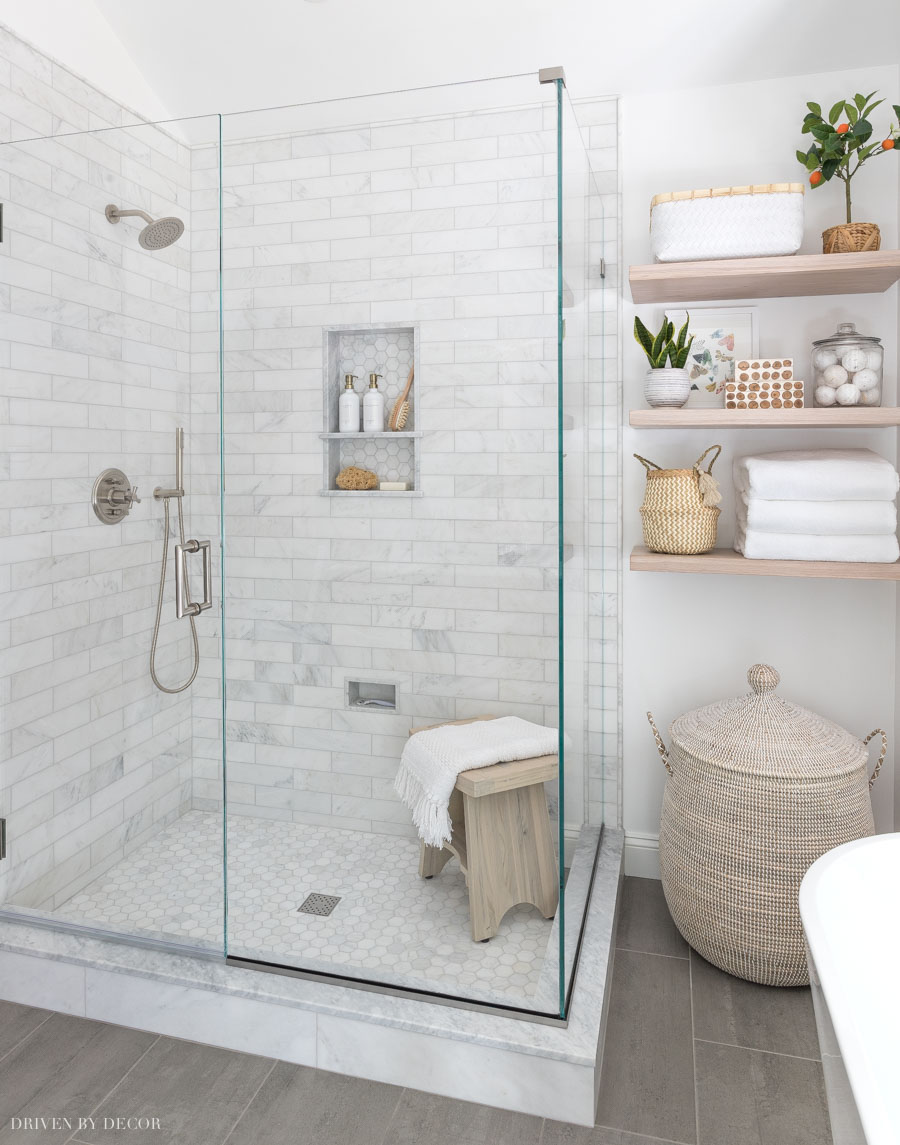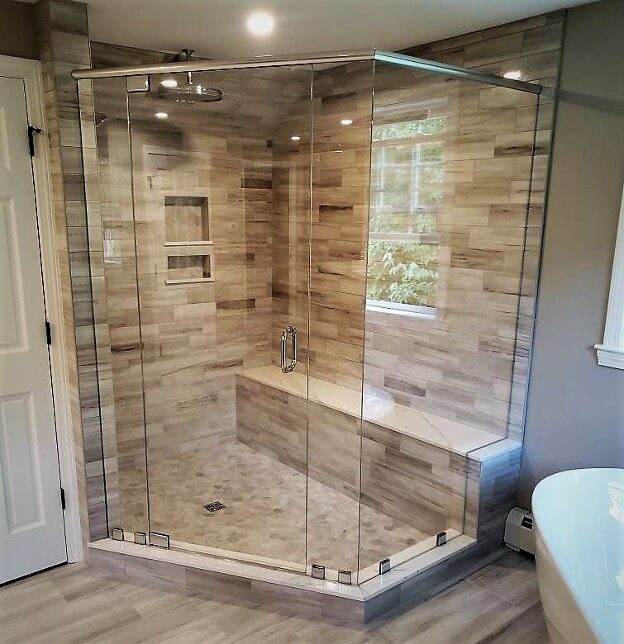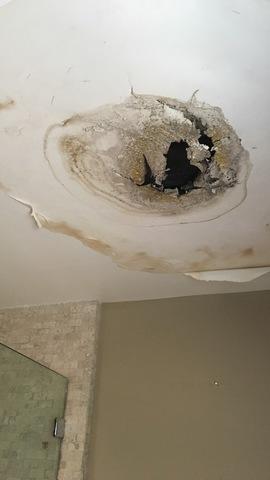Just how do you actually feel about How to Build a Shower Enclosure for Your DIY Bathroom?

An effective shower installation needs mindful planning as well as a great deal of work. For the most part, you will certainly require to do three types of tasks: mounting walls, mounting the plumbing, and ending up walls.
Prep work
Firstly, you should select the type of shower that you want to mount. It is essential to identify whether the chosen shower is capable of handling particular systems and can control a secure level of water via the boiler. Many shower devices nowadays are designed to be versatile to various water pressures (such as kept warm water and chilly keys).
It is also crucial to think about the water pressure and the planning of the piping as well as drain for the shower
Various Sorts Of Shower Units
- Push-on Mixer: The hose and spray parts of the push-on mixer shower system can be linked to the bathroom faucet based on your need, and also the water temperature can be adjusted through the taps. Push-on mixers are cheap as well as very basic to set up. Nonetheless, although the tube link is straightforward, it is conveniently dislodged. Additionally, it is inconvenient to adjust the temperature.
- Bath/Shower Mixer: The hose and spray of this type of shower are combined with a bath mixer tap, and the temperature can be adjusted via the bathroom faucets. It is a really economical alternative and also no extra plumbing is involved. However, the bath/shower mixers also struggle with inconvenient temperature control choices.
- Handbook Mixer: The hose pipe as well as spray of a hands-on mixer shower system belong of the wall surface system as well as the cold and hot water materials are linked to a solitary valve The temperature as well as pressure of the water are managed with either one or a variety of knobs (in much more expensive showers). Although temperature control is much easier in manual mixer kinds, they are extra costly than the previously discussed mixers. They also require additional plumbing of cold and hot water pipelines.
- Thermostatic Mixer: The hose pipe and spray of this shower type are a part of the wall surface device as well as the hot and cold water supplies are connected to a solitary shutoff right here as well. It is complete with a built-in stabiliser to self-adjust the water temperature level and also to avoid it from ending up being too warm. Among the greatest benefits of a thermostatic mixer shower type includes hassle-free temperature level control. Nevertheless, it is the most expensive of the various mixer choices.
- Power Shower: A power shower is a single unit having an effective electric pump that is capable of modifying both the water pressure and temperature level. This kind of shower can be fitted if there is supply of water from a cold water tank as well as a hot water cyndrical tube. A power shower makes the change of both pressure and temperature level simple. On the other hand, it is unsuitable for water warmed directly by the shower or where the water is supplied by a mix boiler under keys stress.
- Electric Shower: An electric shower is plumbed right into a mains cold water supply and it warms the water electrically. It is essential to note that for this shower kind to be installed, the keys pressure needs to be at the very least 0.7 kg/sq cm (10lb/sq in). The device enables the temperature as well as pressure to be readjusted through a handle. Designs with temperature stabilisers are much better as they remain untouched by other faucets elsewhere being used within the house. A major disadvantage of electrical showers is that the control knob just allows for the choice of heats at less pressure, or reduced temperatures at a higher stress. This is bothersome in the winter season when the spray is commonly weak and the mains water is cooler. However, this issue is taken on in some models which are offered with a winter/summer setup.
Approach
Depending on the kind of shower you desire to install, the shower head should either be suited order to prevent its contact with the water in the bath below or the base tray, or it needs to have a check shutoff.
Before starting, it is a good idea to note the positions of the shower head as well as control, as well as to intend the pipe-work involved. Furthermore, the drain system to get rid of the drainage will need to be prepared. Both settings of the wire route and the shower switch will likewise require to be taken into consideration if an instantaneous or electric shower unit is being set up.
Utilize the guideline overview given with the shower unit to fit the shower control.Before fitting the pipes that will supply the water to the shower system, it is essential to remove the water system. In order to shield the pipelines, they need to be given a waterproof covering and also fitted with isolating valves. The pipes can then be buried into the wall and plastered over to neaten the overall look.
Fit the base tray, shower head, and fittings.
Connect the main shower control to the pipes that will be supplying the water (This may require a female screw thread adapter).
Reconnect the water supply and also examination the pipelines for any type of leakages, as some might need tightening up.
If you are setting up an electrical shower, remember to switch off the electricity supply before making any kind of electric links. When these links have been made (there ought to be guidance within the instruction manual), the power supply can be switched back on.
Readjusting Water Stress to Fit Your Shower
The cold water tank can be lifted to a greater height (occasionally just 150mm (6inches)) by installation a strong wooden assistance under it - potentially composed of struts and blockboards. If you choose this alternative, the primary as well as distribution pipelines will certainly likewise have to be elevated to satisfy the new elevation of the storage tank.
Alternatively, a booster pump (a single pump or a dual/twin pump) can be fitted. Whichever kind is selected, it should be connected right into the power supply in order to operate.
Piping and Water drainage
It is best to utilize 15mm diameter supply pipelines, and also make the runs to the shower as short and also straight as possible so as to keep maximum pressure and also minimise heat loss. In addition, by minimising the use of joints for pipe corners, you can lower the resistance in the flow of the water supply. You can attain this by bending the pipelines rather.
Most Usual Errors
- Violating or neglecting local code constraints.
- Utilizing pipes that are also small.
- Affixing copper to galvanized without utilizing a brass or dielectric suitable in between the two.
- Not utilizing tape or pipe substance at threaded joints.
- Not leveling your components when installing them.
- Not mounting an air gap loading for fixtures.
- Reducing supply stub outs too brief to install the shutoff valves onto after the ended up wall remains in place.
- Not appropriately aligning tubes into fittings or quit shutoffs. (Requiring the nut onto the compression ring at an angle when the tubes is at an angle will certainly cause a leakage.).
- When turning the water back on in your home, constantly run the outside tube valve or purge your commodes to bleed dust and air from the lines. This particles can cause issues in your sink taps and various other plumbing trim.
Most Popular Shower Enclosure Options to Upgrade Your Bathroom
Frameless Shower Enclosures
Switching to a frameless shower enclosure can instantly add a modern feel to your bathroom. This type of shower enclosure eliminates the visual obstruction of frames, providing a seamless flow using fully customisable glass.
Since they are fully customisable, it fits all sizes and shapes of your bathroom space. You can also design it in a way suitable for an expansive spa shower.
In-line Shower Options
Another popular shower enclosure option you can use to upgrade your bathroom is an in-line shower. This type of shower installs a shower glass in-line with an adjacent wall, keeping water within the shower area.
You can have two options for in-line showers: hinged doors and sliding doors. An in-line shower with hinged doors allows you to have one glass shower door mounted on one side and open the door outwards. Meanwhile, in-line showers with sliding doors will enable you to save space but are more expensive.
Semi-Frameless Shower Enclosures
The semi-frameless shower enclosure is also an excellent shower enclosure option as it reduces the possibility of mould. Since the glass door is frameless, there’s no way soap and water will be stuck on it. But to ensure that there’s no way for mould to flourish in your bathroom, choose frameless shower enclosures instead.
Semi-frameless shower enclosures are the ideal choice if you adore the design of frameless showers but would prefer a more affordable solution. These types of shower enclosures have a range of options available by the glass manufacturing process in accordance with various height specifications.
You can also customise this type of shower enclosure. However, your options might be limited because of the standard sizes and heights.
Glass Block Shower Enclosure
If you don’t want a bathroom door and walk-in glass shower enclosures are not an option either, a glass block shower enclosure is for you. Glass blocks will allow your bathroom to access maximum daylight while having the privacy it offers. Also, glass block enclosures might require a bit more effort to clean than other enclosures, but they are durable and versatile options.
You can also be creative when using glass blocks for your bathroom. Since this type of shower enclosure is made of small glass blocks, you can easily create a unique shower enclosure shape. There are many options for thickness, styles, and colours, too.
Final Thoughts
Upgrading your bathroom with a new shower enclosure is a great way to add value to your home. Not only will it appear nice, but it will also be more functional and efficient. When choosing a shower enclosure, pick one that fits the style of your bathroom and your budget. It’s also paramount to take note of the pros and cons of each type before installation to ensure you don’t miss anything important.
https://gharpedia.com/blog/shower-enclosure-to-upgrade-bathroom/

I ran across that content about How to Install a One-Piece Shower Unit while browsing on the web. Are you aware of someone else who is curious about the subject? Do not hesitate to share it. We truly appreciate reading our article about How to Install a One-Piece Shower Unit.
Visit The Following Page

